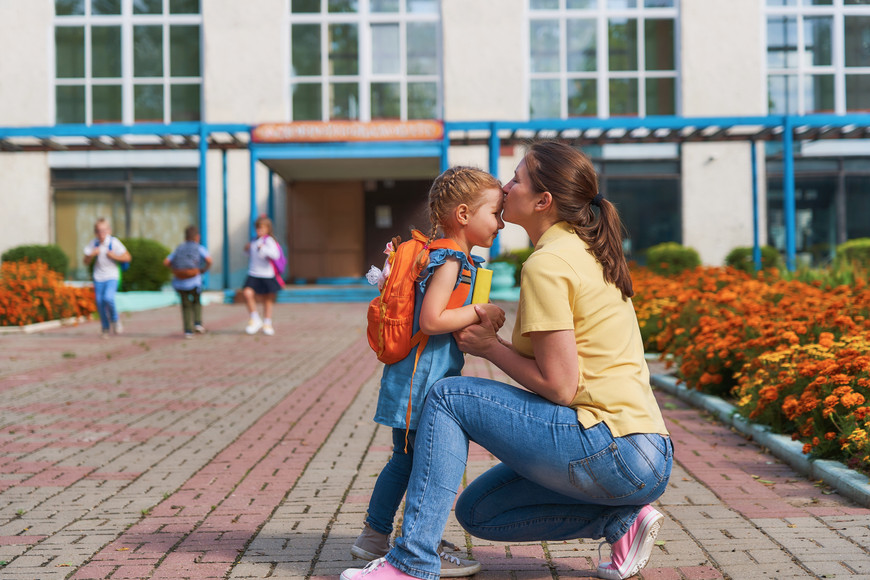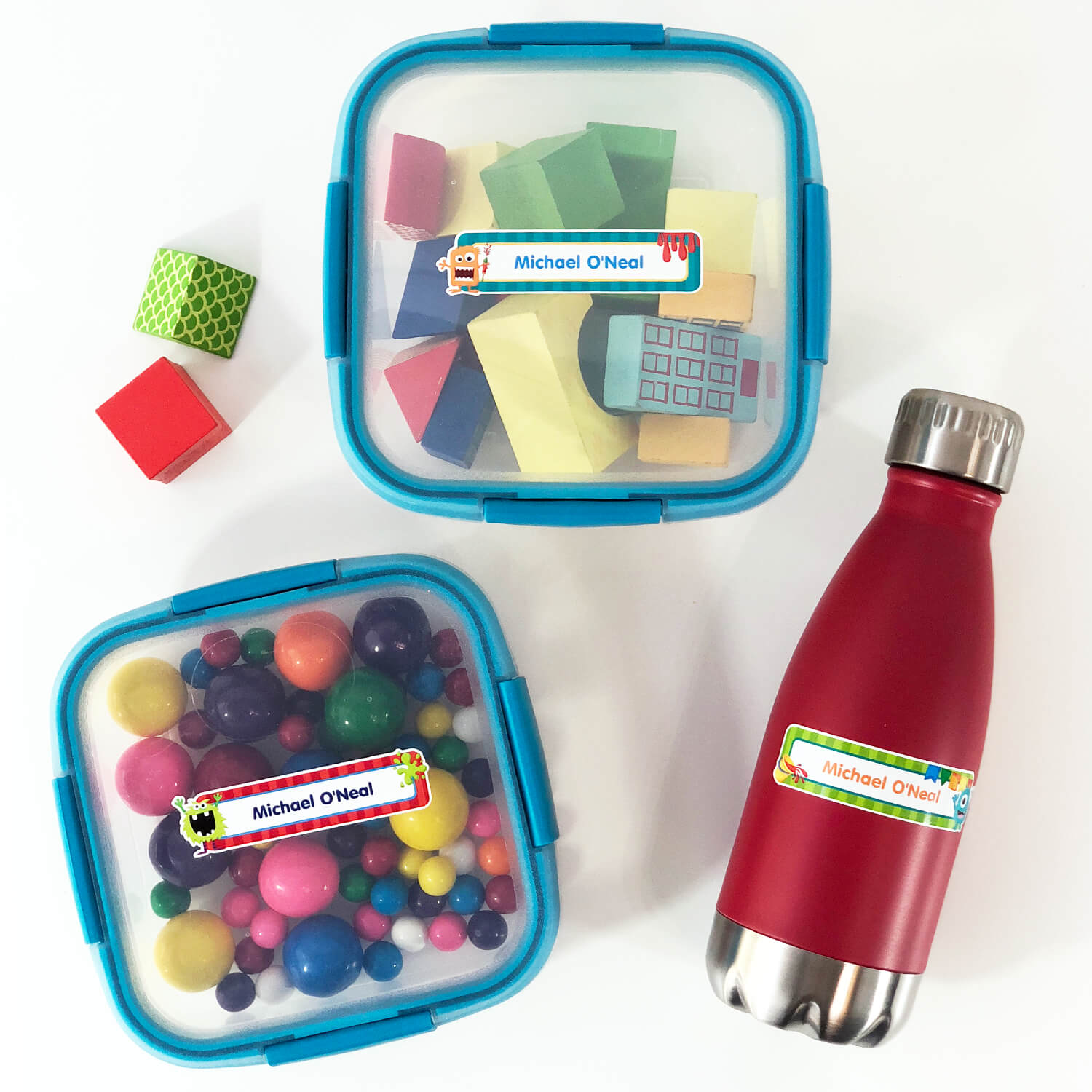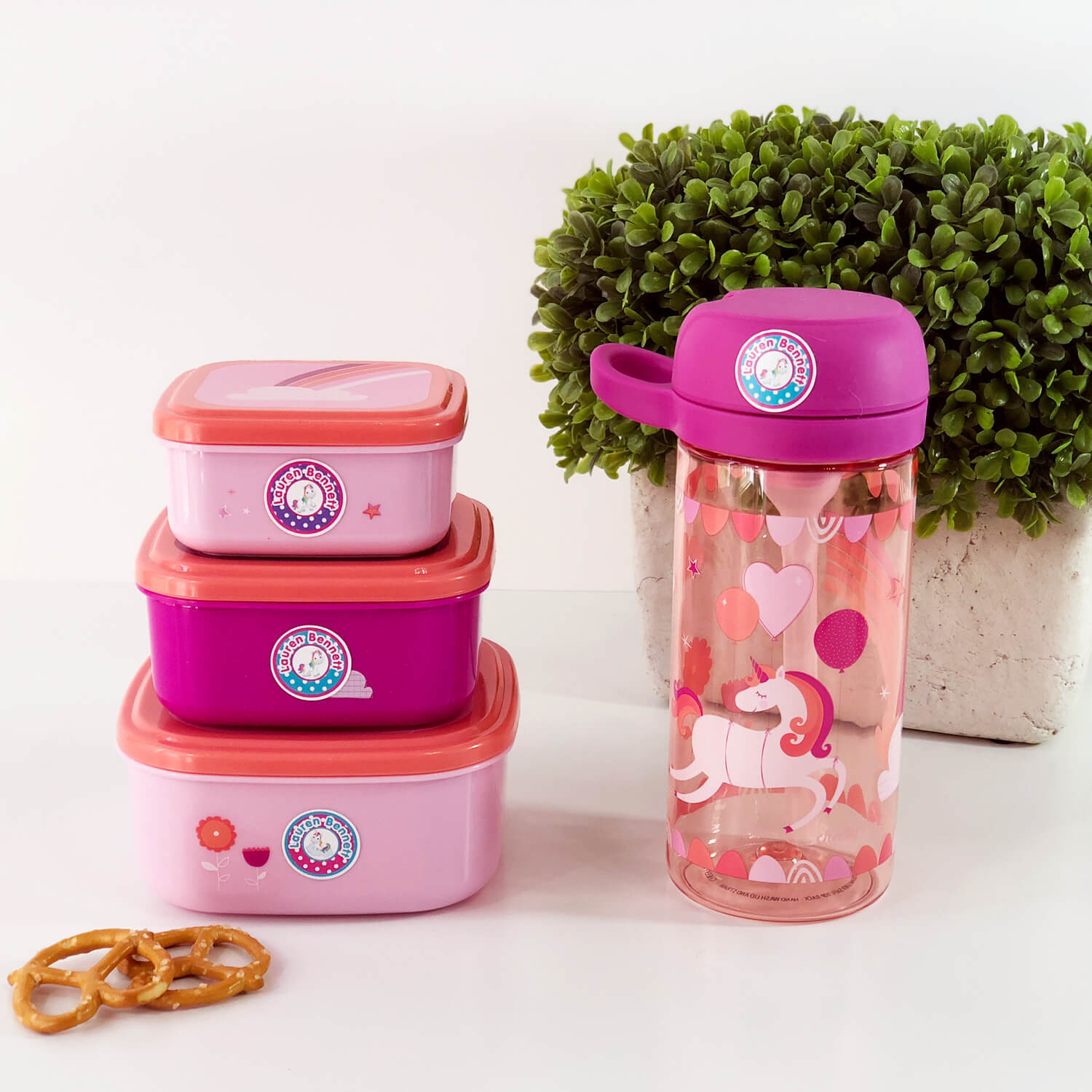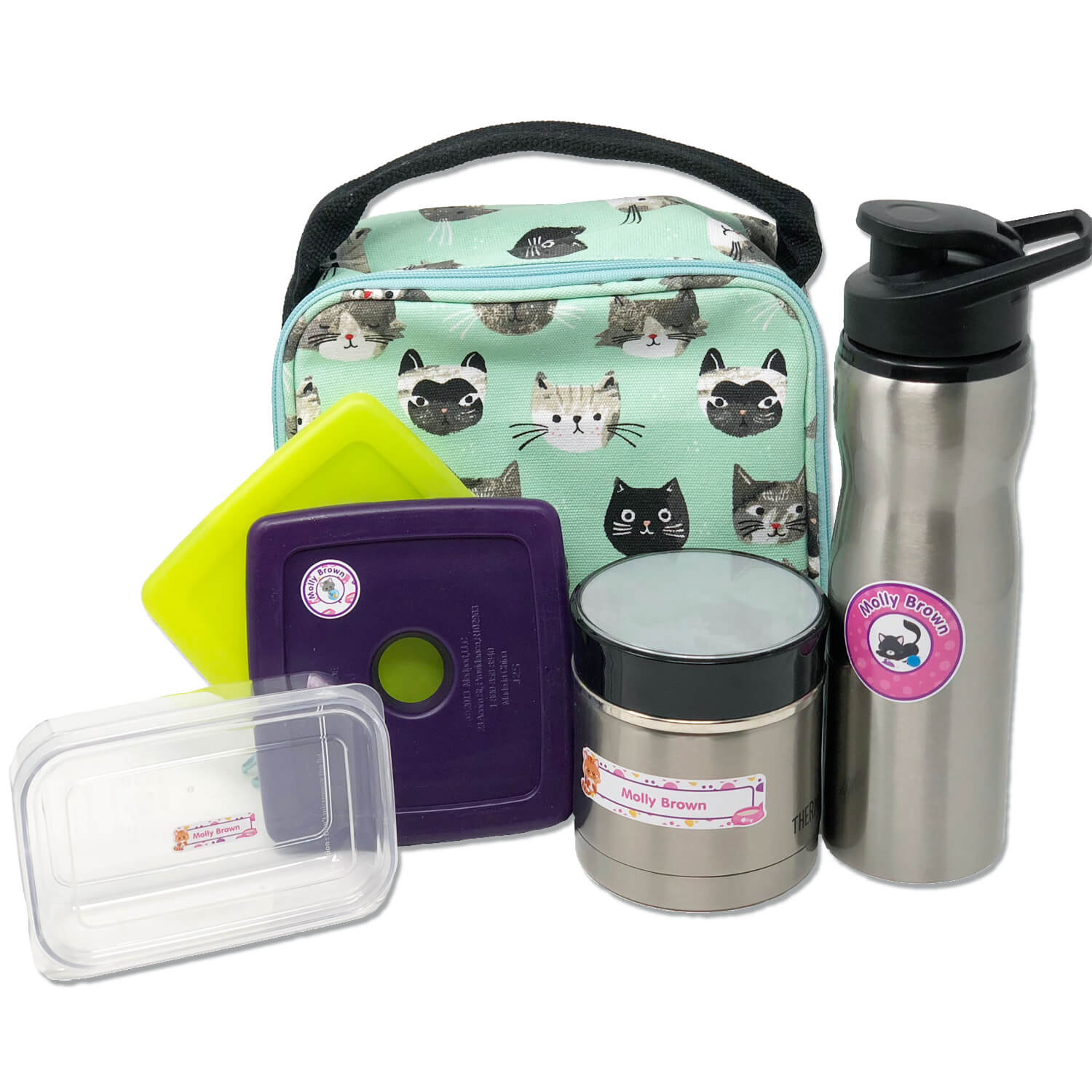Daycare to Elementary School Transition: 10 Tips That Make the Switch Seamless
Making the leap from daycare to elementary school can feel overwhelming for both parents and children. As a mom of three boys—I understand the unique challenges this transition brings. The good news? With the right preparation and mindset, you can make this milestone smooth and successful for your whole family.
The Big Transition: What Every Parent Needs to Know
The move from daycare to elementary school represents one of childhood's biggest changes. Unlike daycare's flexible, nurturing environment, elementary school introduces structured learning, increased independence expectations, and new social dynamics. Research shows that children who are well-prepared for this transition perform better academically and adjust more quickly to their new environment.
Key Differences Between Daycare and Elementary School:
- Structure: Fixed schedules vs. flexible routines
- Independence: Self-directed tasks vs. guided activities
- Academic focus: Formal learning vs. play-based education
- Social dynamics: Larger peer groups and classroom management
- Responsibility: Personal organization and following multi-step directions
1. Start the Conversation Early (3 Months Before)
Begin talking about "big kid school" at least three months before the transition. Use positive, exciting language that builds anticipation rather than anxiety.
What to Discuss:
- "You're growing up and ready for new adventures!"
- Explain the differences between daycare and elementary school
- Read books about starting kindergarten together
- Share your own positive school memories
Pro Tip: Visit the school playground during off-hours so your child can explore the environment without pressure.
2. Build Academic Readiness Skills
Elementary school expects certain foundational skills that may not have been emphasized in daycare.
Essential Academic Skills Checklist:
- ✅ Recognizes and writes their name
- ✅ Knows basic letters and letter sounds
- ✅ Can count to 20 and recognize numbers 1-10
- ✅ Holds a pencil correctly
- ✅ Follows 2-3 step directions
- ✅ Sits and focuses for 15-20 minutes
- ✅ Raises hand to speak or ask questions
Practice Activities:
- Letter recognition games during car rides
- Writing practice with fun worksheets or sidewalk chalk
- Story time with questions about plot and characters
- Counting games with toys, snacks, or household items
3. Master Independence Skills
Elementary school requires much more self-sufficiency than most daycare environments.
Critical Independence Skills:
- Bathroom independence: Using the restroom without assistance
- Lunch management: Opening containers, using utensils, cleaning up
- Clothing management: Zipping jackets, tying shoes, managing backpacks
- Personal responsibility: Keeping track of belongings
Practice Strategies:
- Let your child pack their own snack
- Practice opening different types of lunch containers
- Use waterproof lunch box labels so they can identify their food items independently
- Create a morning routine checklist they can follow
4. Develop Social and Emotional Readiness
The social environment in elementary school differs significantly from daycare's smaller, more intimate setting.
Social Skills to Practice:
- Sharing and taking turns in group settings
- Asking for help when needed
- Making new friends and joining group activities
- Managing emotions when frustrated or disappointed
- Following classroom rules and respecting authority
Emotional Preparation:
- Role-play common school scenarios
- Practice deep breathing for anxiety
- Discuss what to do if they feel scared or confused
- Validate their feelings while maintaining positivity
5. Create Organization Systems That Work
One of the biggest challenges in the daycare to elementary school transition is keeping track of personal belongings. Unlike daycare, where teachers closely monitor children's items, elementary students are expected to manage their own supplies.
Essential Organization Strategies:
- Label everything with waterproof school labels - backpacks, lunch boxes, water bottles, jackets
- Use clothing labels on uniforms and play clothes to prevent lost items in the playground
- Create designated spots at home for school items
- Establish a daily "pack and check" routine
Why Labeling Matters:
Elementary schools handle hundreds of lost items weekly. Teachers report that labeled items are 90% more likely to be returned to their owners. Waterproof name labels survive playground activities, lunch spills, and frequent washing.
Parent Testimonial:
"After losing three jackets in the first month of kindergarten, I invested in iron-on clothing labels. My daughter hasn't lost a single item since, and she feels so proud when she can identify her own belongings!" - Sarah, mom of two
6. Practice the New Routine
Elementary school operates on a much more structured schedule than daycare. Start adjusting your routine 4-6 weeks before school begins.
Routine Adjustments:
- Earlier bedtime and wake-up time (gradually shift by 15 minutes weekly)
- Structured meal times that match school lunch schedule
- Quiet time for homework or reading practice
- After-school activity planning for working parents
Sample Elementary School Day Preparation:
- 7:00 AM: Wake up and get dressed
- 7:30 AM: Breakfast and morning checklist
- 8:00 AM: Gather school items and head out
- 3:00 PM: After-school snack and decompression
- 4:00 PM: Homework time or educational activities
- 6:00 PM: Family dinner
- 7:30 PM: Bath and bedtime routine
- 8:00 PM: Lights out
7. Address Lunch and Cafeteria Navigation
For many children, eating lunch in a large cafeteria represents a significant change from daycare's family-style meals.
Cafeteria Preparation:
- Practice eating within a time limit (20-30 minutes)
- Use lunch container labels so they can identify their food quickly
- Teach proper cafeteria etiquette and cleanup
- Discuss lunch choices and healthy eating
Lunch Packing Tips:
- Choose easy-to-open containers
- Pack familiar foods initially, then gradually introduce new items
- Include a special note or drawing for encouragement
- Label all lunch components with your child's name
8. Build Relationships with School Staff
Unlike daycare's consistent caregiver relationships, elementary school involves multiple adults your child will interact with daily.
Key Relationships to Establish:
- Classroom teacher - Schedule a meet-and-greet before school starts
- School nurse - Especially important for children with allergies or medical needs
- Office staff - They're often the first point of contact for issues
- Cafeteria workers - Helpful for children with dietary restrictions
Communication Strategies:
- Share important information about your child's needs, interests, and concerns
- Provide emergency contact information and any special instructions
- Use medical alert labels for children with allergies or health conditions
- Establish preferred communication methods with teachers
9. Prepare for Common Challenges
Even with excellent preparation, some challenges are normal during the transition period.
Common Transition Challenges:
- Separation anxiety - Both for children and parents
- Fatigue from longer, more structured days
- Behavioral regression - temporary return to younger behaviors
- Academic overwhelm - feeling behind or confused
- Social difficulties - trouble making friends or fitting in
Solutions and Support:
- Maintain consistent routines and expectations
- Provide extra emotional support and patience
- Communicate regularly with teachers about concerns
- Consider a gradual transition if the school offers it
- Remember that adjustment typically takes 4-6 weeks
10. Create a Support Network
The transition affects the whole family, and having support makes a significant difference.
Building Your Support System:
- Connect with other parents in your child's class
- Join school parent groups or PTA organizations
- Maintain relationships with daycare friends when possible
- Establish playdates to help your child build new friendships
- Find backup childcare for school holidays and sick days
Working Parent Considerations:
- Research after-school care options early
- Understand school holiday schedules and plan accordingly
- Establish relationships with other parents for emergency pickup situations
- Use emergency contact labels on backpacks and lunch boxes
Timeline: Your 3-Month Transition Plan
3 Months Before:
- Begin conversations about elementary school
- Start visiting the school playground
- Begin academic skill building activities
- Research after-school care options
2 Months Before:
- Schedule school tours and teacher meetings
- Begin routine adjustments (bedtime, meal times)
- Order school label packs for supplies and clothing
- Start independence skill practice
1 Month Before:
- Finalize school supply shopping and labeling
- Practice the full school routine
- Arrange playdates with future classmates
- Complete all school paperwork and health requirements
1 Week Before:
- Do a practice run to school
- Prepare first-day outfit and school supplies
- Have a special "last day of daycare" celebration
- Ensure all items are properly labeled and organized
Making the Emotional Transition
Remember that this transition is emotional for parents too. It's normal to feel sad about leaving the familiar daycare environment where your child felt safe and nurtured.
For Parents:
- Acknowledge your own feelings about the change
- Focus on the exciting opportunities ahead
- Trust in your child's resilience and adaptability
- Maintain perspective - most children adjust beautifully
For Children:
- Validate their feelings while staying positive
- Create special traditions around school milestones
- Celebrate small victories and progress
- Provide extra comfort and reassurance during the adjustment period
The Bottom Line: You've Got This!
The transition from daycare to elementary school is a significant milestone, but with thoughtful preparation and the right support systems, your child will thrive. Remember that every child adjusts at their own pace, and temporary challenges are completely normal.
Your Action Plan:
- Start conversations and preparation 3 months early
- Focus on building independence and academic readiness
- Invest in quality labeling systems to prevent lost items and build confidence
- Establish routines that support success
- Build relationships with school staff and other families
- Be patient with the adjustment process
The most important thing you can do is approach this transition with confidence and excitement. Your child will pick up on your energy and attitude, so model the enthusiasm you want them to feel about this new adventure.
About the Author
As the founder of Sticky Monkey Labels and a mom of three boys—two with food allergies and one adopted with special needs—I understand the unique challenges families face during major transitions. I started this business right after my second son was born, inspired by our family's need for reliable, durable labels that could keep up with active kids and busy family life. Every product we create is designed with real families in mind, because I know firsthand how the right organizational tools can make all the difference in reducing stress and building confidence during big changes like starting elementary school.
Ready to make your child's transition seamless? Explore our School Label Packs designed specifically for elementary school success.






